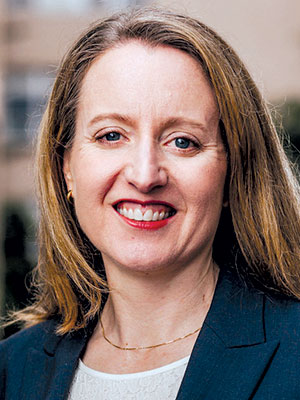
During Clinical Practice sessions on Sunday and Monday, a primary care sports medicine physician and a rheumatologist with expertise in musculoskeletal ultrasound will work together to show how physical exam and ultrasound can be used in conjunction to effectively diagnose common injuries.
The session Anatomy: Correlating Physical Exam and Ultrasound in Common Sports Injuries of the Upper Extremity will take place from 11:00 am – 12:00 pm Sunday in Thomas Murphy Ballroom 3-4, Building B of the Georgia World Congress Center. Anatomy: Correlating Physical Exam and Ultrasound in Common Sports Injuries of the Lower Extremity, will take place from 11:00 am – 12:00 pm Monday in the same room. These sessions count toward the MSUS CME requirement for the RhMSUS™ program.
Carlin Senter, MD, who is Associate Professor of Primary Care Sports Medicine at the University of California, San Francisco, said the Sunday session would review the anatomy of the upper extremity and demonstrate the proper way to detect and confirm common injuries from the shoulder to the fingertips through physical exam and imaging.
While rheumatologists are undoubtedly experts in care of the musculoskeletal system, Dr. Senter said that as a primary care sports medicine physician, she’s more focused on mechanical injuries of joints and soft tissues rather than inflammatory conditions. She believes the anatomical focus she takes is a little different from that of a rheumatologist.
“I always find it useful when I talk to rheumatologists or get to listen to a rheumatology talk,” she said. “I would imagine the flipside is true as well — that they will find value in hearing a sports medicine approach to conditions they think about frequently.”
Sunday’s fast-paced session will review six sports medicine cases from Dr. Senter’s clinic. Dr. Senter will present the history and physical exam. Anthony Reginato, MD, PhD, Associate Professor and Director of the Division of Rheumatology at Brown University, Providence, RI, will provide the ultrasound correlates.
Monday’s session will cover six cases from hip to ankle.
“These are problems that affect athletes of all ages and levels,” Dr. Senter said. “The main take-home message will be the key physical exam maneuvers physicians need to know when treating a patient with hip, knee, lower leg, or foot /ankle pain.”
Dr. Senter’s area of interest is in teaching the musculoskeletal exam, so attendees can expect a thorough refresher on the most important physical exam maneuvers for such complaints as rotator cuff disease, sport injuries of the elbow, and common problems of the wrist and fingers. While reviewing these exam techniques, Dr. Senter said, she will also discuss data related to the sensitivity and specificity of the maneuvers.
“Physicians learn these maneuvers in medical school, but they may not learn the evidence behind them,” she said. “It’s interesting to learn that some of these maneuvers when used alone are neither sensitive nor specific. Part of the reason for this session is to illustrate this. You want to be able to do three or four maneuvers. One alone isn’t really useful. None of them are all that powerful independently.”
However, Dr. Senter said, if you put two or three positive exam tests together that increases the likelihood you’ve identified a given problem.
She will include video demonstrations for many of the maneuvers so attendees can see how to perform them in an exam setting. There will be an opportunity for questions from attendees as well.
